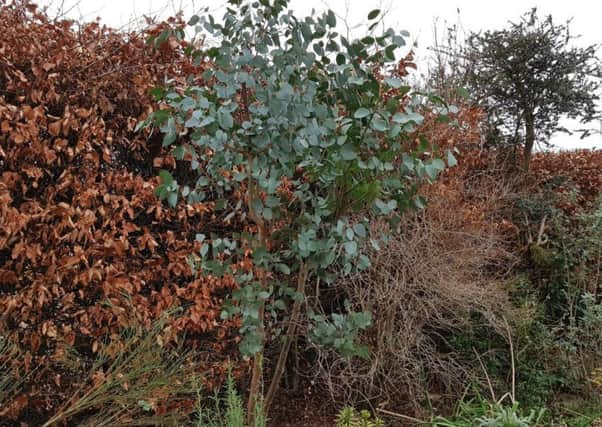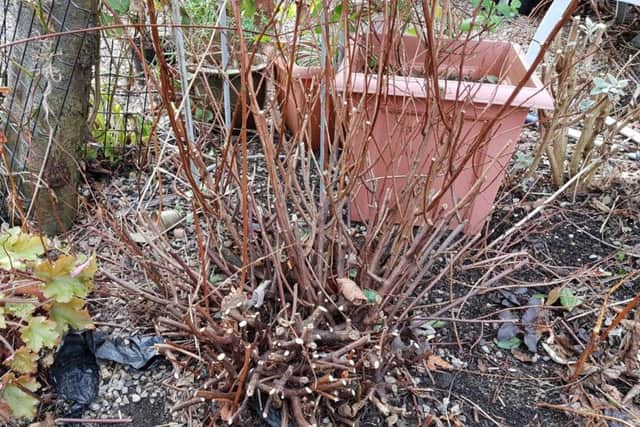Gardening: Get pruning to prepare for summer shows


Late winter is generally taken to mean February but like all gardening tasks, you can extend that into March.
Choose a dull day – you don’t way to be looking up into the sun if you’re pruning a tree.


Advertisement
Hide AdAdvertisement
Hide AdSo why prune now? Cutting a plant back when it is dormant or just starting into growth means all the energy can be put into developing fruit, flowers, etc.
It’s mostly for fruit trees, canes and bushes, late-flowering deciduous shrubs and clematis.
1. Apple and pear trees: winter pruning can be quite complex, so find out where your tree bears its fruit – spurs, tips or partial tips. Don’t over-prune or you’ll get a mass of water shoots that won’t bear fruit.
2. Autumn-fruiting raspberries: cut canes to ground level and thin if required.


Advertisement
Hide AdAdvertisement
Hide Ad3. Gooseberries: remove dead and low-lying shoots. Spur prune side shoots to one to three buds from the base. Shorten branch tips by a quarter, cutting to an outward facing bud.
4. Currant fruit bushes: aim to remove older wood, leaving young shoots, as this is where fruit forms. Remove weak shoots, to give six-10 healthy shoots.
5. Late-flowering deciduous shrubs: for emample Buddleja davidii. Flowers form on the current year’s growth, so hack back hard for the best blooms.
6. Shrubs grown for winter bark or stem or young foliage, such as dogwoods (Cornus) and Eucalyptus gunnii: cut back hard every two to three years or to your required shape.


Advertisement
Hide AdAdvertisement
Hide Ad7. Late-flowering clematis (Group 3): these flower on this year’s growth, so need to be pruned back hard in late winter to encourage a flush of new growth. If not cut back, flowers will appear higher and higher up the plant – birds will get a good view but you won’t.
8. Large-flowered clematis (Group 2): they flower in May/June. The aim is to develop a framework of old wood and stimulate new shoots to promote flowering throughout the season. Can also be cut back after flowering to promote another flush of blooms later in summer.
However, it’s not for everything. Steer clear of anything that flowers early – shrubs like Forsythia or Group 1 clematis like C. montana. Prune early-flowered shrubs and Group 1 clematis AFTER blooming.
Also avoid pruning anything in the Prunus (cherry) family, as they can fall victim to silver leaf disease if cut back in winter.


GET IN TOUCH
Advertisement
Hide AdAdvertisement
Hide Adl For more information, plus cook what you grow, recipes, environmental news and more, log on to www.mandycanudigit.com (now smartphone friendly), follow me on Twitter @MandyCanUDigIt or you can like me on my Facebook page at Mandycanudigit
JOBS TO DO THIS WEEKEND
Protect lily, Delphinium and hosta shoots from slugs and snails before they appear.
Place gladioli corms in seed trays or boxes and place in a light, warm (about 10ºC/50ºF) place to encourage them to sprout. This will ensure an earlier display.
Prune back the stems of pot-grown overwintered fuchsias and place in a well-lit, warm place to encourage new growth.
Advertisement
Hide AdAdvertisement
Hide AdDivide clumps of herbaceous perennials that you want to propagate, those that have become too large or are flowering poorly.
Improve drainage of heavy soils by working in lots of organic matter and coarse gravel (if necessary). Mulching with a deep layer of organic matter helps to condition the soil, suppress weed growth, insulate plant roots and conserve soil moisture during the summer.
Top up pots and tubs with fresh compost.
Top dress beds and borders with a balanced fertiliser such as Growmore or blood, fish and bone, to feed perennials as they start back into growth.
Prune winter-flowering jasmine (Jasminum nudiflorum) once the flowers have faded. Remove dead or damaged shoots, tie in new ones to the main framework, and shorten all the laterals coming off the main framework to 5cm (2in), cutting to a bud. This will keep the plant neat, and improve flowering next winter. Feed and mulch after pruning.
Advertisement
Hide AdAdvertisement
Hide AdTrim winter-flowering heathers with shears as the flowers fade to stop the plants from becoming leggy and bare.
Lily-of-the-valley (Convallaria) that was lifted from the garden to use as pot plants in the greenhouse, should now be planted back outside.
This year’s potato bed will benefit from a good application of compost or rotted manure that can be forked in.
Cover soil with dark plastic sheeting, fleece or cloches to warm it up for a couple of weeks before you start to sow and plant.
Advertisement
Hide AdAdvertisement
Hide AdJerusalem artichokes and shallots can be planted now – but cover with a cloche.
Sow summer cabbages such as Greyhound and Primo, as well as turnips and spinach.
Onions from seed should be started now. They need about 15 degrees to germinate, so a windowsill in a cool room is ideal, in 3in pots and prick out the seedlings into their final positions when large enough, or sow into plugs where they’ll stay until planting out.